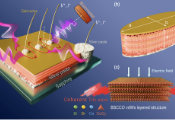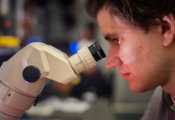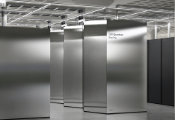Quantum Simulation With Interacting Ultracold Atoms: Recent Progress and Future Perspectives
March 28, 2025 -- Atomic quantum simulators are emerging quantum technologies that have demonstrated tremendous potential to unveil novel quantum mechanical phenomena. Typically, the experimental platform for these simulators involves bosonic atoms at ultracold temperatures. By creating a grid of light with powerful lasers, called an optical lattice, the atoms arrange in space following a periodic pattern, occupying different lattice sites. However, rather than remaining isolated from one another, the atoms can interact in many different ways: they can hop from one lattice site to another nearby site, they can feel attraction or repulsion from their nearest neighbors in the lattice, and they can even interact with atoms placed further away through so-called long-range interactions, among others.
The richness and malleability of these systems allow researchers to simulate more complex systems, which might be impossible to access directly, and to explore new states of matter that may not even exist in nature, making artificial creation in the laboratory the only way to observe them.
Fortunately, several theoretical models, the non-standard Bose-Hubbard models (BHMs), can faithfully capture all the intricacies of the aforementioned systems. Investigating non-standard BHMs in the context of atomic quantum simulators is therefore crucial for advancing the field, both from theoretical and experimental perspectives.
The realization of optical lattices in the 2000s triggered the early expansion non-standard BHMs research, which has kept developing rapidly ever since. Nevertheless, ten years have passed since the last review on the topic, during which many significant advances have been made. Today, extraordinary progress in the experimental engineering and theoretical characterization of non-standard BHMs has rendered the previous review outdated.
Now, a joint collaboration between the Indian Institute of Technology Indore, the Institute for Condensed Matter Physics and Complex Systems (Politecnico de Torino), the Institute for Quantum Optics and Quantum Information (Innsbruck), the University of Innsbruck, the Institute of Theoretical Physics (Jagiellonian University), the Mark Kac Center for Complex Systems Research (Jagiellonian University), and ICFO and ICREA Prof. Dr. Maciej Lewenstein, has provided an updated review, published in Reports on Progress in Physics. In this work, they have collected some of the most recent and exciting results on the investigation of non-standard Bose-Hubbard models, focusing on their application for atomic quantum simulators.
Tackled both from a theoretical and experimental perspective, the researchers discuss how intriguing states of matter and quantum mechanical effects can emerge in these systems, outline recent experimental setups using ultracold atoms and describe the obtained results, and speculate on future developments. “We believe that this review poses the ground towards many more scientific achievements that the future will bring”, the researchers say.
Some of the key advances include accounting for dissipative on-site effects (how energy is lost in the system due to interactions) in the theoretical description, making it more accurate; the experimental implementation of long-range interactions and the subsequent exploration of their effect on atomic dynamics, leading to new insights into quantum many-body physics; and achieving higher control of inter-atomic interactions.
“The amount of recent results is impressive”, the authors share, believing that this wealth of successful research “demonstrates the central importance that non-standard Hubbard models had, have and will have in order to understand fundamental laws of nature appearing in condensed matter and, as recently realized, high energy physics and quantum chemistry.”1




































